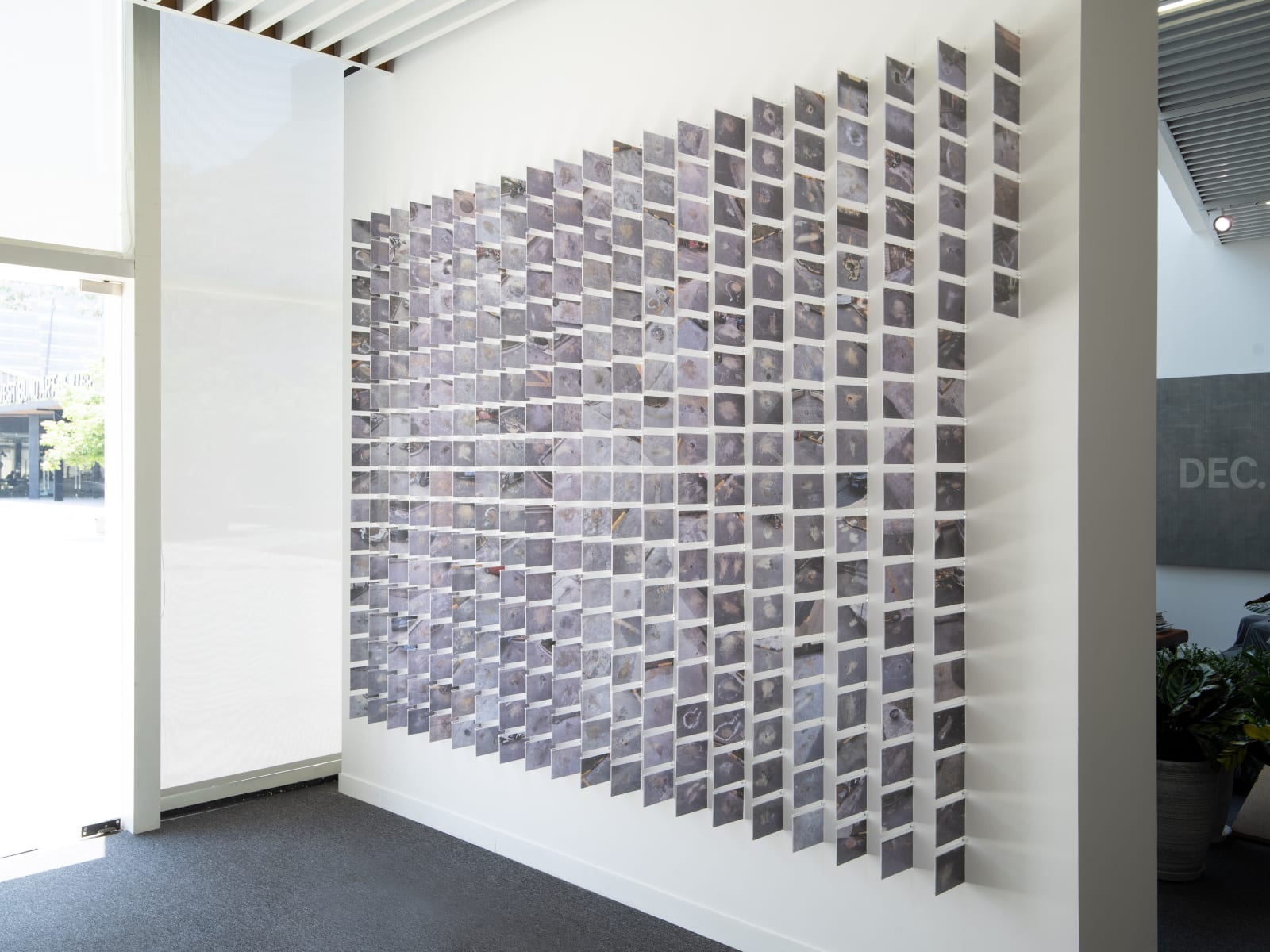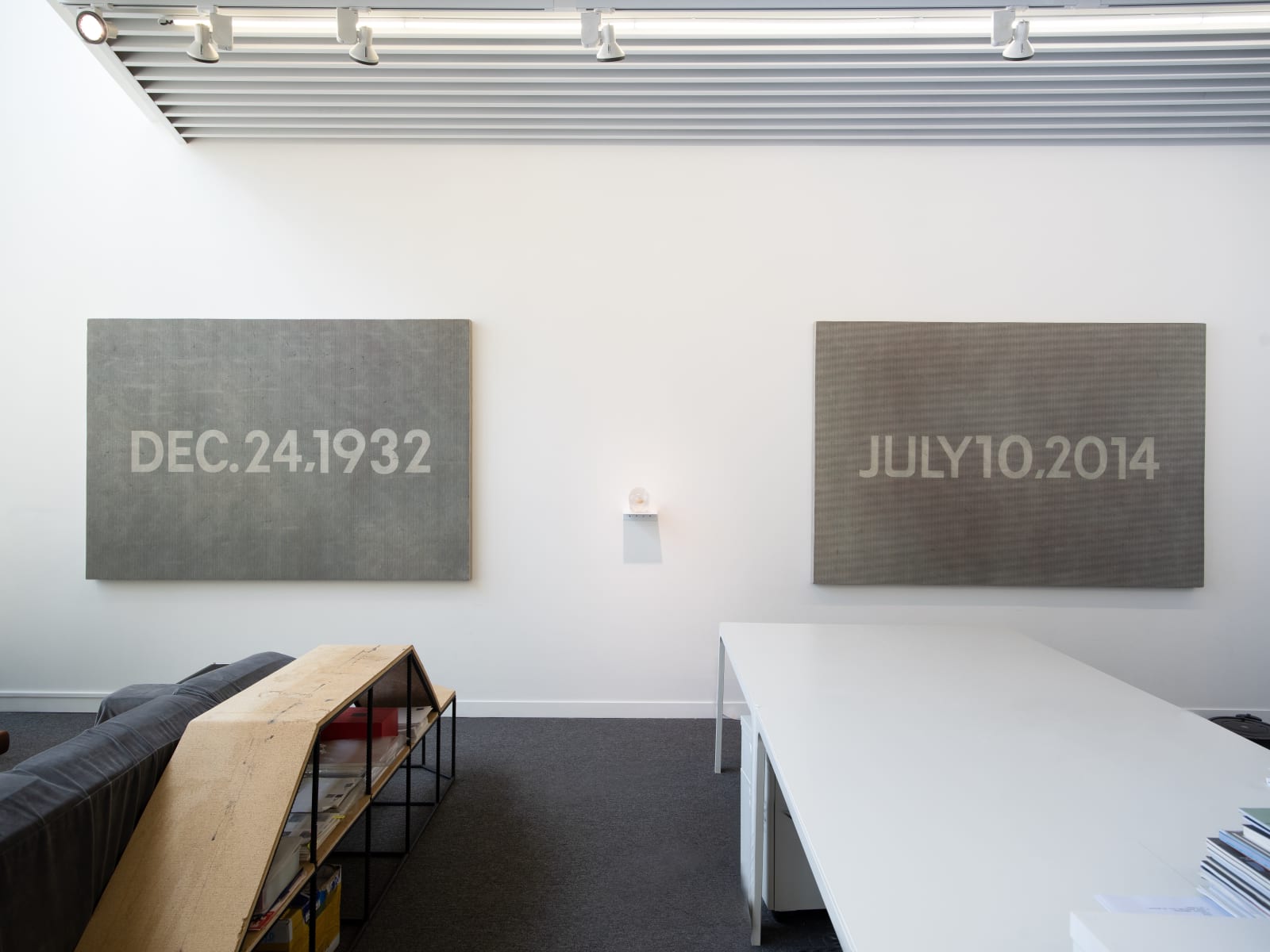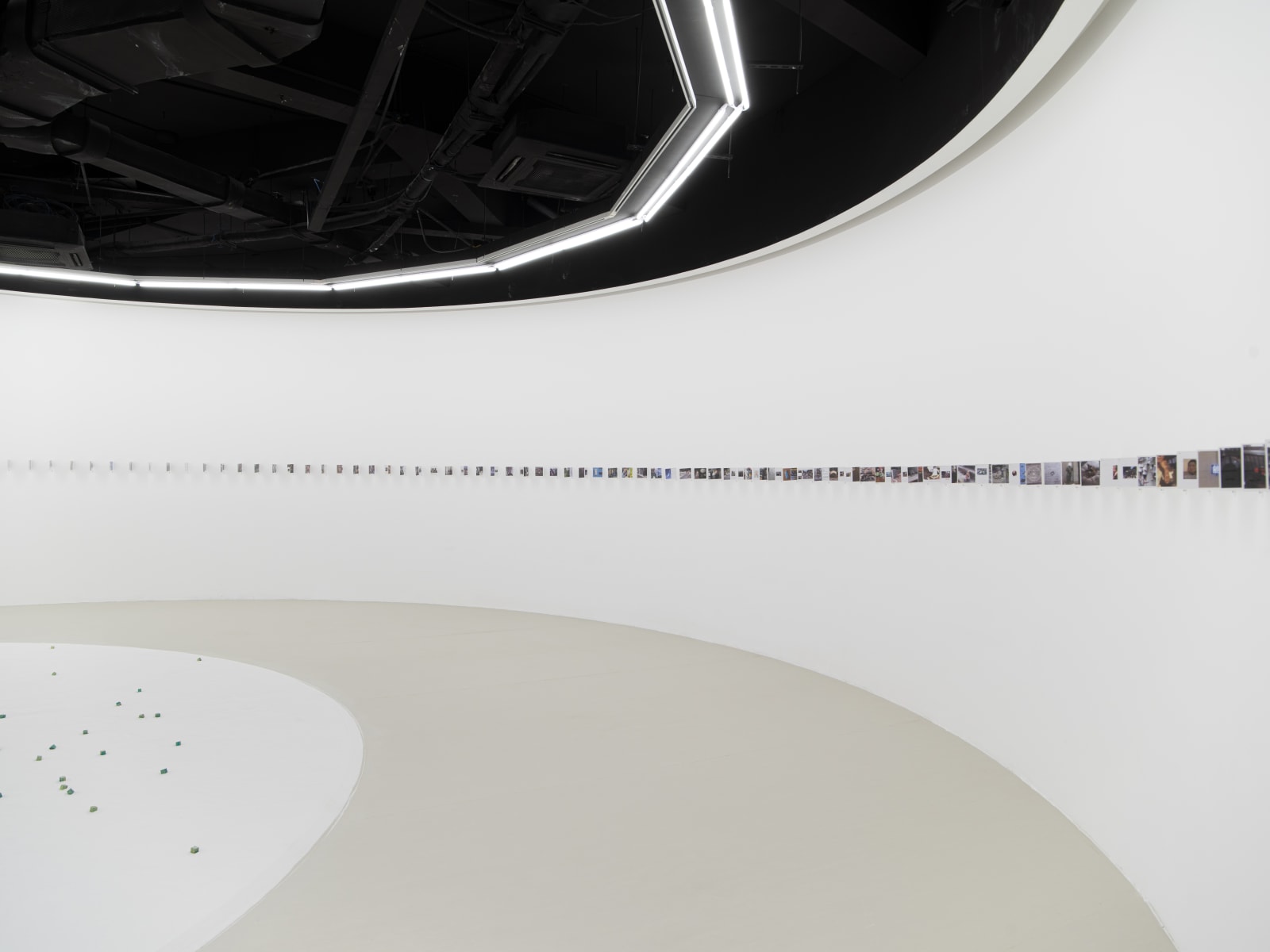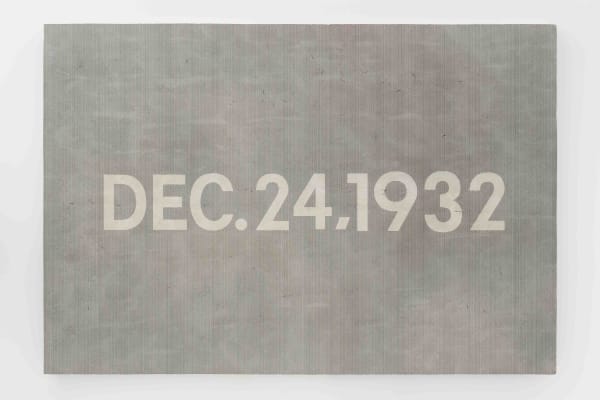LIU Ren: Yesterday Once More: Solo Exhibition
Past exhibition
Installation Views
Overview
Don Gallery is proud to announce the launch of LIU Ren’s solo exhibition -- “Yesterday Once More” from May 15 to July 3. This will be LIU’s fifth solo exhibition at Don Gallery. LIU has selected two major works by late Japanese conceptual artist, On Kawara, as a starting point. Tracing Kawara’s works, LIU’s work forms a resonance with the Japanese artist, and thereby reflects on man’s understanding of time and existence itself.
The curation of this exhibition encompasses two major zones. Three installation works -- An Inch of Time: Sea Grains, A Solidified Sea, and Postcards to Myself -- will be on show in Don Gallery’s unique circular exhibition space. Among these, Postcards to Myself comprises 88 postcards. The work is a reinterpretation of Kawara’s view that time is proof of existence. While Kawara sent 900 telegrams to friends that read: “I am still alive” throughout the 1970s, the recipient and sender of LIU’s work are one and the same. His practice of sending mail to himself is undoubtedly a way of regarding himself within the flow of time -- the LIU Ren of the future witnesses the LIU Ren of the present.
If Postcards to Myself is an exploration of time via the two poles of the present and the future, then An Inch of Time: Sea Grains is an attempt to seek out the same subject between reality and the virtual. Taking a digital image of the sea purchased in 2011, LIU divided it into nearly a thousand sections, and proceeded to screen print the sections one by one onto gold leaf gilded acrylic squares. These innumerable “sea grains” are placed on table salt scattered within the exhibition space, forming a visual narrative of something taken from the sea and returned to the sea, which serves as a metaphor for time. To the artist, table salt originates from the sea -- a body of water that he has not seen, yet which truly exists. On the other hand, the digital image of the sea is something he has seen with his own eyes, yet it only exists virtually. LIU believes intersection between the two is precisely how humans perceive time.
Similarly, A Solidified Sea explores time’s passage and solidification. An hourglass has been emptied of sand, which has been replaced with a gold leaf gilded acrylic cube imprinted with images of the sea. The cube stops up the bottleneck of the hourglass, which is Time’s metonymy. Here, LIU has replaced movement with stillness, the semantics of the piece likewise indicate the opposite of itself -- a static moment, or an eternity of stasis.
Moving on to another exhibition space, we encounter several more of LIU’s pieces, which continue to deepen his exploration of Kawara’s work. Of these, Circles comprises 366 postcards sent on each day of 2020. In Kawara’s version, the artist recorded the time he got out of bed on the postcards and sent them to his friends. On LIU’s postcards, the artist has recorded two times -- his time of waking and going to bed, as if to condense the infinite cycle of life and death. The postcards depict the chalk circle remnants of the folk custom of burning joss paper offerings to one’s ancestors. On their reverse, LIU responds to Kawara’s retracing of time’s passage by alluding to the butterfly effect through the use of butterfly stamps.
The diptych, Panta Rhei 1932.12.24–2014.07.10, is a reinterpretation of Kawara’s “Today” series. LIU extends the original format by supplementing two key dates -- Kawara’s birth and death. The commemorative significance of these additions correspond to the original meaning of the phrase “Panta Rhei” or “everything flows.” This also resonates with the exhibition’s theme of “Yesterday Once More” -- although nothing is eternal, yesterday may appear once more in the memory. The other
pieces in this area all express Time’s indivisible and unrelenting “transformation” to some degree. For example, in Flow, recycled straw toilet paper is transformed into pulp, and then reformed into an hourglass which can be opened. In parting the sea and splitting the hourglass, LIU expresses his original intention of reshaping the form of time itself. In Immortality, egg shells are the narrative material. Each half of a broken shell is placed on either side of a scale formed of paper pulp. The shell fragments indicate the hopefulness of birth while simultaneously alluding to fragile despair. The stark confrontation of these two contrasting metaphors echoes the temporal theme of the work’s title.
Overall, LIU’s go-to media of recycled straw paper resurfaces throughout this exhibition. With liquid as a metaphor for time, the artist expresses our experience of time, and thereby centers the ontology of our existential context. What should be emphasized is how this exhibition condenses the rhetoric of LIU’s artistic language in a manner similar to the enantiosemy of exegetics or paradox—a language that expresses synonym and antonym all at once. In terms of form, “Panta Rhei” is like yet unlike painting. Educated as a printmaker, LIU uses screen printing techniques in this series, but the process of creating bricks of paper and embedding gold leaf is more commonly seen in sculpture or installation. The artist’s explorations of theme encompass a number of dualities -- the past and present, reality and the virtual, solidification and flow, and more. As for the all-important properties of the physical, LIU has transformed one of the cheapest and most disposable consumer products into works of art which strive at timelessness. In other words, enantiosemy broadens the semantic breadth of artistic language employed in the works on show. It is as boundless as the artist’s beloved sea -- the nearer shore or the farther -- inexorable, LIU pulls the audience towards a contemplation of time.
The curation of this exhibition encompasses two major zones. Three installation works -- An Inch of Time: Sea Grains, A Solidified Sea, and Postcards to Myself -- will be on show in Don Gallery’s unique circular exhibition space. Among these, Postcards to Myself comprises 88 postcards. The work is a reinterpretation of Kawara’s view that time is proof of existence. While Kawara sent 900 telegrams to friends that read: “I am still alive” throughout the 1970s, the recipient and sender of LIU’s work are one and the same. His practice of sending mail to himself is undoubtedly a way of regarding himself within the flow of time -- the LIU Ren of the future witnesses the LIU Ren of the present.
If Postcards to Myself is an exploration of time via the two poles of the present and the future, then An Inch of Time: Sea Grains is an attempt to seek out the same subject between reality and the virtual. Taking a digital image of the sea purchased in 2011, LIU divided it into nearly a thousand sections, and proceeded to screen print the sections one by one onto gold leaf gilded acrylic squares. These innumerable “sea grains” are placed on table salt scattered within the exhibition space, forming a visual narrative of something taken from the sea and returned to the sea, which serves as a metaphor for time. To the artist, table salt originates from the sea -- a body of water that he has not seen, yet which truly exists. On the other hand, the digital image of the sea is something he has seen with his own eyes, yet it only exists virtually. LIU believes intersection between the two is precisely how humans perceive time.
Similarly, A Solidified Sea explores time’s passage and solidification. An hourglass has been emptied of sand, which has been replaced with a gold leaf gilded acrylic cube imprinted with images of the sea. The cube stops up the bottleneck of the hourglass, which is Time’s metonymy. Here, LIU has replaced movement with stillness, the semantics of the piece likewise indicate the opposite of itself -- a static moment, or an eternity of stasis.
Moving on to another exhibition space, we encounter several more of LIU’s pieces, which continue to deepen his exploration of Kawara’s work. Of these, Circles comprises 366 postcards sent on each day of 2020. In Kawara’s version, the artist recorded the time he got out of bed on the postcards and sent them to his friends. On LIU’s postcards, the artist has recorded two times -- his time of waking and going to bed, as if to condense the infinite cycle of life and death. The postcards depict the chalk circle remnants of the folk custom of burning joss paper offerings to one’s ancestors. On their reverse, LIU responds to Kawara’s retracing of time’s passage by alluding to the butterfly effect through the use of butterfly stamps.
The diptych, Panta Rhei 1932.12.24–2014.07.10, is a reinterpretation of Kawara’s “Today” series. LIU extends the original format by supplementing two key dates -- Kawara’s birth and death. The commemorative significance of these additions correspond to the original meaning of the phrase “Panta Rhei” or “everything flows.” This also resonates with the exhibition’s theme of “Yesterday Once More” -- although nothing is eternal, yesterday may appear once more in the memory. The other
pieces in this area all express Time’s indivisible and unrelenting “transformation” to some degree. For example, in Flow, recycled straw toilet paper is transformed into pulp, and then reformed into an hourglass which can be opened. In parting the sea and splitting the hourglass, LIU expresses his original intention of reshaping the form of time itself. In Immortality, egg shells are the narrative material. Each half of a broken shell is placed on either side of a scale formed of paper pulp. The shell fragments indicate the hopefulness of birth while simultaneously alluding to fragile despair. The stark confrontation of these two contrasting metaphors echoes the temporal theme of the work’s title.
Overall, LIU’s go-to media of recycled straw paper resurfaces throughout this exhibition. With liquid as a metaphor for time, the artist expresses our experience of time, and thereby centers the ontology of our existential context. What should be emphasized is how this exhibition condenses the rhetoric of LIU’s artistic language in a manner similar to the enantiosemy of exegetics or paradox—a language that expresses synonym and antonym all at once. In terms of form, “Panta Rhei” is like yet unlike painting. Educated as a printmaker, LIU uses screen printing techniques in this series, but the process of creating bricks of paper and embedding gold leaf is more commonly seen in sculpture or installation. The artist’s explorations of theme encompass a number of dualities -- the past and present, reality and the virtual, solidification and flow, and more. As for the all-important properties of the physical, LIU has transformed one of the cheapest and most disposable consumer products into works of art which strive at timelessness. In other words, enantiosemy broadens the semantic breadth of artistic language employed in the works on show. It is as boundless as the artist’s beloved sea -- the nearer shore or the farther -- inexorable, LIU pulls the audience towards a contemplation of time.
Works
-
 LIU RenPantaRhei 1932.12.24-2014.07.10 (Diptych) PantaRhei 1932.12.24-2014.07.10 (双联画), 2019Straw paper, UV print, mixed media 草纸,UV打印,综合材料155 x 226 x 7 cm 155 x 226 x 7 cm x 2
LIU RenPantaRhei 1932.12.24-2014.07.10 (Diptych) PantaRhei 1932.12.24-2014.07.10 (双联画), 2019Straw paper, UV print, mixed media 草纸,UV打印,综合材料155 x 226 x 7 cm 155 x 226 x 7 cm x 2 -
 LIU RenPantaRhei-139219(2), 2021Silk Screening on straw paper, gold foil 丝网草纸 金箔219 x 139 cm
LIU RenPantaRhei-139219(2), 2021Silk Screening on straw paper, gold foil 丝网草纸 金箔219 x 139 cm -
 LIU RenImmortality 长生不老, 2021Straw paper, egg shell, sewing machine, cotton, candle, gold foil 草纸,鸡蛋壳,缝纫机线,蜡烛,金箔60 x 77 x 18.5 cm
LIU RenImmortality 长生不老, 2021Straw paper, egg shell, sewing machine, cotton, candle, gold foil 草纸,鸡蛋壳,缝纫机线,蜡烛,金箔60 x 77 x 18.5 cm -
 LIU RenNewton & Forbidden Fruit 牛顿与禁果, 2019Straw paper, oil, gold foil, mixed media 草纸,油彩,金箔,综合材料17 x 26.5 x 33 cm
LIU RenNewton & Forbidden Fruit 牛顿与禁果, 2019Straw paper, oil, gold foil, mixed media 草纸,油彩,金箔,综合材料17 x 26.5 x 33 cm -
 LIU Ren, Soul 灵魂, 2021
LIU Ren, Soul 灵魂, 2021 -
 LIU RenForbidden Fruit 禁果, 2018Straw paper, oil, gold foil, mixed media 草纸、油彩、金箔、综合材料17 × 26.5 × 33 cm
LIU RenForbidden Fruit 禁果, 2018Straw paper, oil, gold foil, mixed media 草纸、油彩、金箔、综合材料17 × 26.5 × 33 cm

















